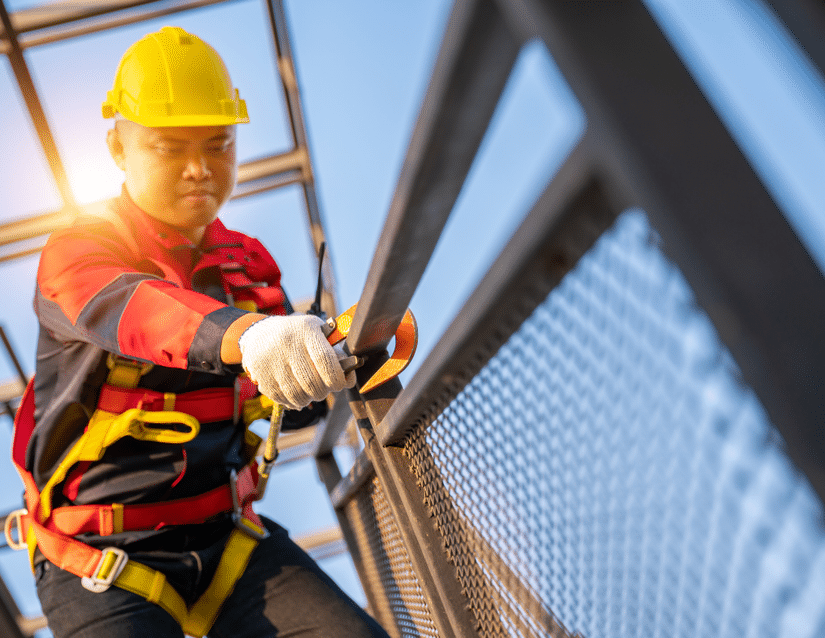The construction industry is inherently hazardous, with workers facing numerous risks on a daily basis. Among the most perilous dangers are falls from heights, which can result in severe injuries or even fatalities. According to the Occupational Safety and Health Administration (OSHA), falls from heights are one of the leading causes of construction-related deaths.
(Understanding the Basics of Workers Compensation)
Understanding the Risks
Falls from heights can occur due to various factors, including:
- Inadequate scaffolding or ladder safety: Poorly constructed or maintained scaffolding, or ladders that are in disrepair, can lead to devastating falls.
- Unstable working surfaces: Uneven, slippery, or weak surfaces can cause workers to lose their balance and fall.
- Inadequate fall protection equipment: Failure to provide or properly use fall protection equipment, such as harnesses and lanyards, can result in severe injuries.
- Human error: Misjudging distances, losing balance, or failing to follow safety protocols can lead to falls.
Prevention Strategies
Preventing falls from heights requires a multi-faceted approach. This includes:
- Conducting thorough risk assessments: Identify potential hazards and implement safety protocols and procedures to mitigate risks.
- Implementing safety protocols and procedures: Develop and enforce safety rules, such as requiring fall protection equipment and ensuring proper scaffolding construction.
- Providing regular training and education: Ensure workers understand the risks and know how to use safety equipment properly.
- Ensuring proper equipment maintenance and inspection: Regularly inspect and maintain equipment to prevent failure.
Protection Measures
In addition to prevention strategies, protection measures are crucial. These include:
- Personal Fall Arrest Systems (PFAS): Absorb the shock of a fall and distribute the force across the body, reducing the risk of injury.
- Guardrails and safety nets: Prevent falls by blocking access to hazardous areas or catching workers who fall.
- Safety harnesses and lanyards: Provide a secure connection to a stable anchor point, preventing falls or arresting falls in progress.
OSHA Regulations and Standards
OSHA has established strict regulations and standards for height safety in the construction industry. These include:
- 29 CFR 1926.501: Duty to have fall protection ( Illinois adopts federal OSHA standards)
- 29 CFR 1926.502: Fall protection systems criteria and practices (Illinois adopts federal OSHA standards)
Fall Protection Equipment: A Detailed Guide
Fall protection equipment is a critical component of height safety. This includes:
- Harnesses: Full-body and seat harnesses are designed for specific tasks and risks. Ensure proper fitting and use.
- Lanyards: Self-retracting and energy-absorbing lanyards vary in type and application. Understand the proper use and maintenance.
Scaffolding Safety: Best Practices and Considerations
Scaffolding safety is crucial to preventing falls from heights. Best practices include:
- Ensuring scaffolding is erected on firm, level ground: Prevents instability and collapse.
- Regularly inspecting scaffolding for damage or wear: Identifies potential hazards before they cause falls.
- Designing and constructing scaffolding to support the intended load: Prevents collapse and ensures stability.
Ladder Safety: Prevention and Protection Measures
Ladder safety is essential to preventing falls from heights. Ensure:
- Ladders are in good condition: Regularly inspect and maintain ladders to prevent damage.
- Proper ladder safety accessories are used: Levelers, stabilizers, and safety feet can reduce the risk of falls.
Emergency Response Planning
In the event of a fall from heights, having an emergency response plan in place is crucial. This includes:
- First aid and medical response: Provide immediate medical attention to injured workers.
- Rescue and evacuation procedures: Quickly and safely remove workers from hazardous areas.
- Notification and reporting procedures: Inform relevant authorities and document incidents.
Real-Life Examples
A construction worker in Chicago suffered severe injuries after falling from a scaffolding that wasn’t properly secured. An investigation revealed that the worker hadn’t received adequate training on scaffolding safety. In another instance, a roofing company in Illinois was fined by OSHA after an employee fell from a height due to inadequate fall protection equipment.
Best Practices
To ensure a safer working environment, construction professionals should:
- Always conduct thorough risk assessments before starting work at heights
- Ensure workers receive regular training on height safety and equipment usage
- Implement a buddy system to monitor workers at heights
Conclusion
Falls from heights are a significant risk in the construction industry, but with the right prevention and protection measures, these dangers can be mitigated. By understanding the risks, implementing prevention strategies, and utilizing protection measures, construction professionals can ensure a safer working environment.
If you or a loved one has been injured in a construction site accident, don’t hesitate to seek legal help. The experienced attorneys at Bizzieri Law Offices can guide you through the process and fight to get you the compensation you deserve. Call us today at 773.881.9000 for a free consultation. We’re here to help you get back on your feet.

